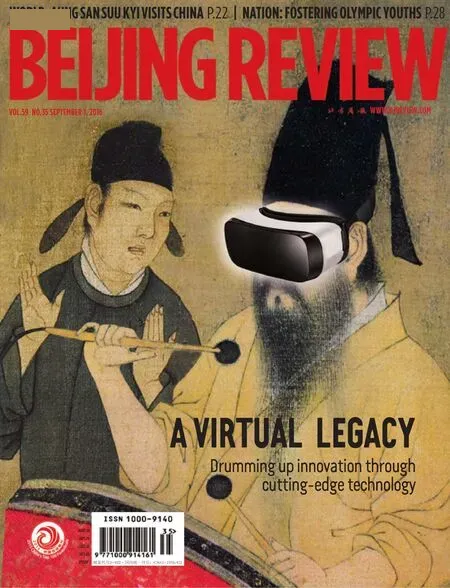Innovation Revival
2016-11-29本刊编辑部
Innovation Revival
What's China's global ranking in terms of innovation competence? It may be a diffcult question to answer. China has become a global leader in some fields of technology and scientific innovation, such as quantum research, supercomputers and manned deep-sea exploration, but lags behind many countries in overall innovation capacity.
Ancient China was an innovation powerhouse with advanced technology,as evidenced by the historical Four Great Inventions—the compass, gunpowder, papermaking and printing. In addition, ancient China also led in areas ranging from silk production to the invention of the world's first seismoscope.
The country started to fall behind in science and technology innovation during the Industrial Revolution.
Since the founding of the People's Republic of China in 1949, the nation has been committed to promoting science and technology with increasing investment in research and development. Over the past decades, many internationally influential feats have been achieved, including manned space fights, moon probe projects and highspeed railways. Today China is at a stage where innovation in science and technology is taking a leap from breakthroughs in individual felds to systematic ability enhancement. The nation's economic growth is increasingly dependent on science and technology innovation.
The 13th Five-Year Plan (2016-20)covers a critical period for China to join the ranks of innovation-driven nations. It's also a key period for implementing an innovationdriven growth strategy and bolstering the reform of science and technology systems across the board.
The Chinese Government is giving unprecedented priority to science and technology innovation. On July 20, the State Council, China's cabinet, passed a national plan for science and technology innovation during the fve-year period. The plan pledges to establish a national innovation system while proposing 12 indexes by which to gauge the country's progress.
For instance, the contribution of science and technology to economic growth will be raised from 55.3 percent in 2015 to 60 percent by 2020. Also, the added value of the knowledge-intensive service industry will account for 20 percent of China's GDP by 2020, up from 15.6 percent last year. All this indicates that China is going to great lengths to become one of the globally recognized innovation-driven countries.
There are undoubtedly hurdles, such as a lack of original innovation ability, core technologies and top-tier researchers. There is also an obvious gap in technology transfer from research institutions to companies. Still, China has never been closer to its goal of becoming an innovation powerhouse once again.
